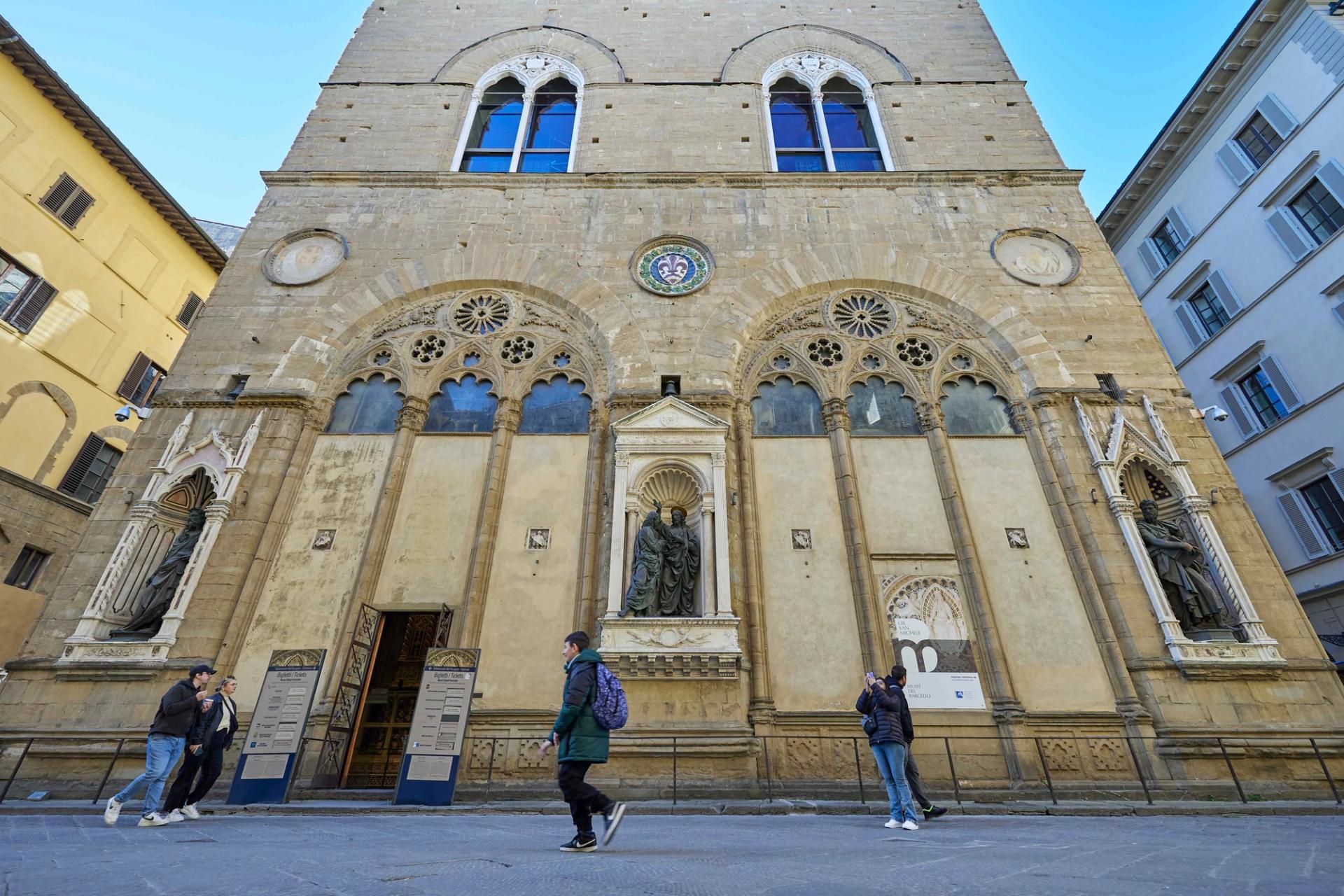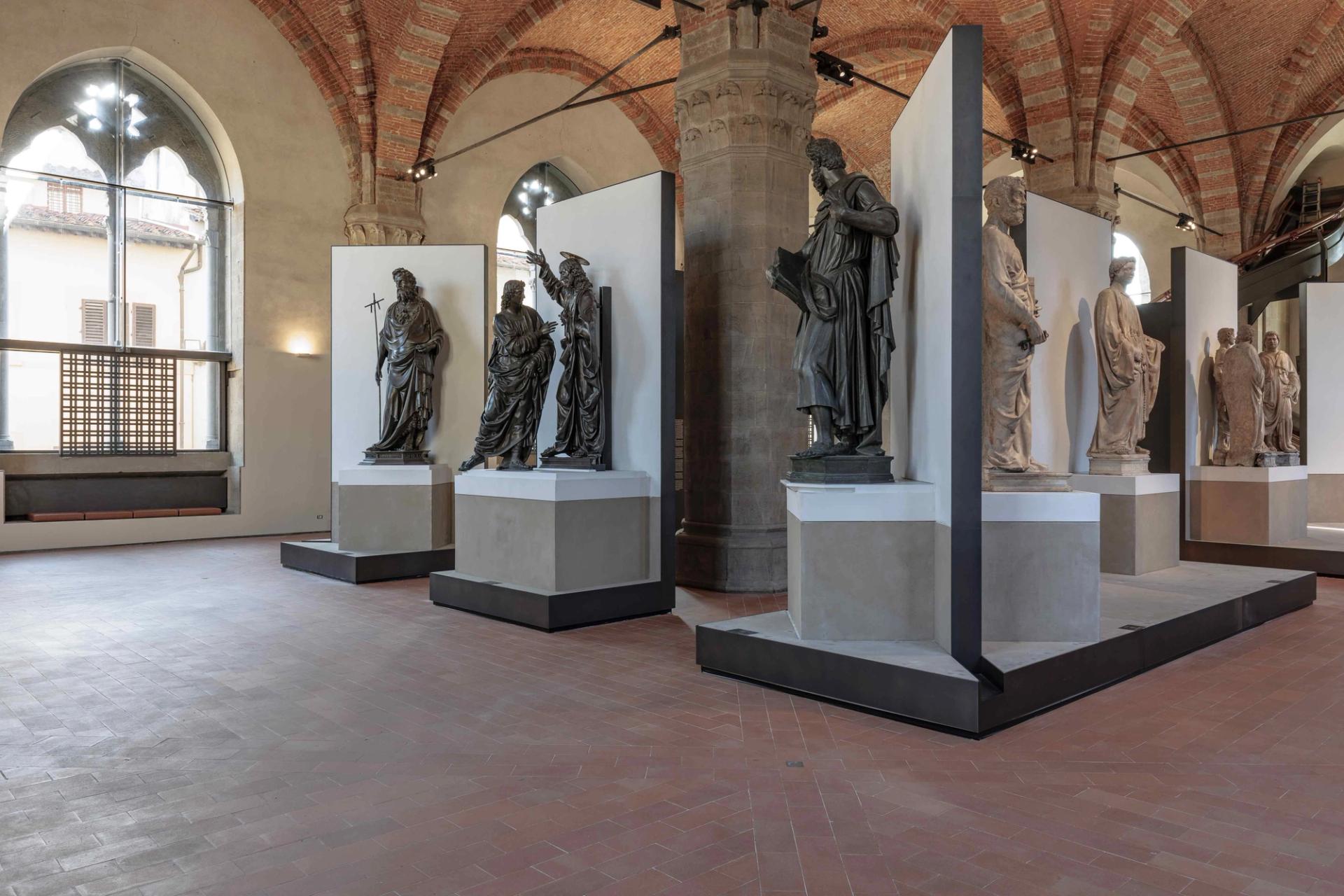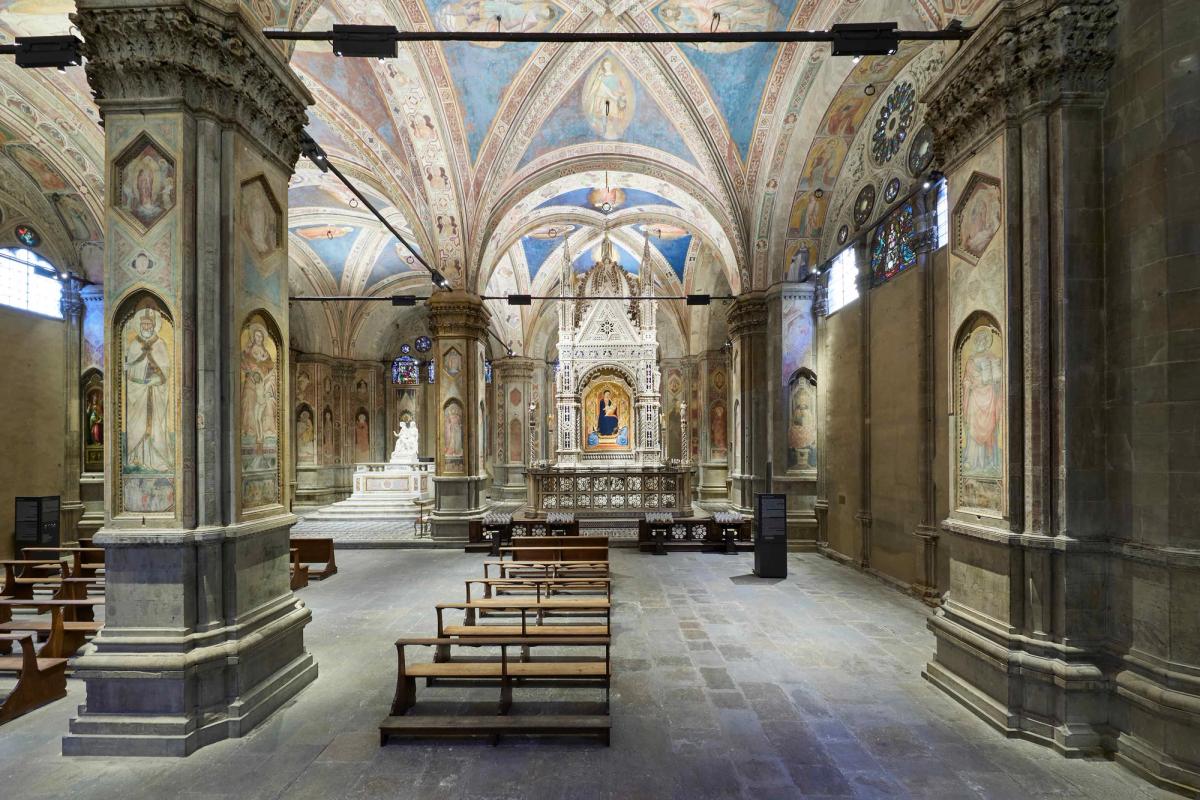The newly renovated Orsanmichele in Florence, a church and former granary that houses some of the world’s most important Renaissance sculptures, had more than half as many visitors in the first three weeks after reopening as it had over the entirety of 2022.
The landmark, which closed for 14 months for a €1.1 million refurbishment, has had 8,000 visitors through its doors in the first 21 days after first letting the public back in on 19 January, compared with 13,000 in the whole of 2022, the last full year it was open. Increasing visitor numbers, and putting the Renaissance structure back at the top of the art lover’s Florentine itinerary, was a major ambition of the overhaul.
Orsanmichele is located in the centre of the city, between the Piazza della Signoria and the Duomo. Originally built in 1336 as a grain market, it was soon converted into a church, with grain stored in the upper floors—this connecting of the spiritual and the secular being central to its place within the origin story of the Renaissance. Over the country of the 14th century, the city's guilds were then invited to commission sculptures for 14 niches around the facade, for which they sought to employ the great practitioners of the day. The resulting works include Donatello’s St Mark, an early example of a figure in the contrapposto pose that, in its naturalism, refers back to the sculpture of antiquity.

In the 14th century, Florence’s guilds were invited to commission sculptures for the niches around Orsanmichele’s facade
Photo: Nicola Neri, courtesy of Musei del Bargello
From the 19th century on, concerns about security and pollution meant the statues were moved inside the building, replaced in the niches by copies. “What we have is the largest number of important Renaissance sculptures in one room,” says curator Benedetta Matucci. But the way they had been displayed since moving inside had left much to be desired.
“They were on low platforms, so they didn’t have the perspective the sculptors intended,” Matucci says. “We’ve now raised them up on a series of plinths to give the viewer more of the original viewpoint.” Lighting has also been vastly improved, and the sculptures are displayed to mirror the way they were placed in the exterior niches.

As part of the renovation, the Renaissance sculptures have been displayed to mirror the way they were placed in the exterior niches
Photo: Lorenzo Mennonna. Courtesy of Musei del Bargello
“We wanted to make the sculptures more accessible, and also more understandable. In medieval times this was one of the most important buildings in Florence, and we want to make sure its story is properly told,” she says. “What you see today maybe isn’t exactly as it would have been in the 14th century, but it’s as similar as possible.”
The church—where mass is still celebrated each Sunday—is dominated by a tabernacle so vast it contains a secret staircase. The piece was created by the artists Andrea di Cione in 1352 to house fellow Renaissance painter Bernardo Daddi’s Madonna and Child with Angels, painted a few years earlier. The refurbishment included a proper clean for the tabernacle, and new glass doors mean the church can be glimpsed from the street beyond.
Over recent years the museum was opened only one or two days a week, and only for small groups: going forward it will be open six days a week like most of Florence’s other main attractions.


